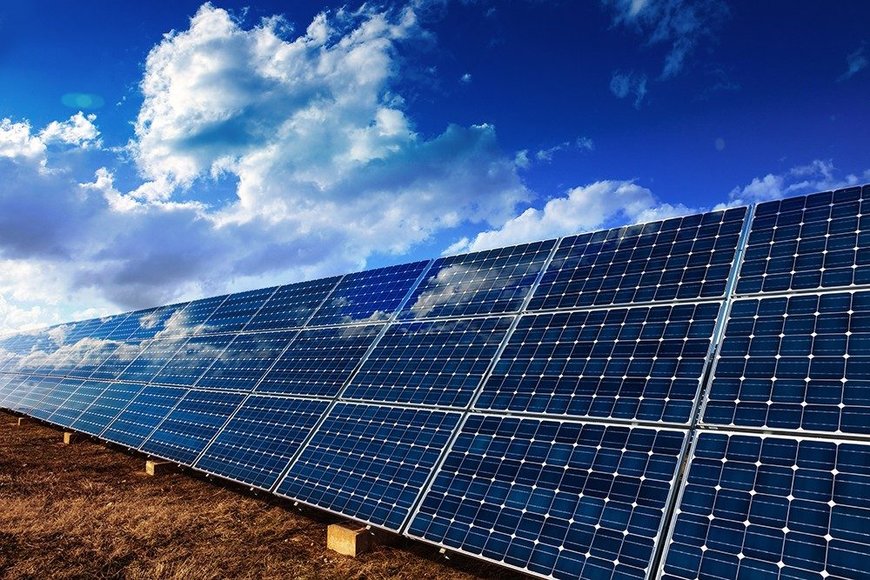www.industryemea.com
16
'20
Written on Modified on
EATON News
Ending the use of SF₆ in power grids with air insulated switchgear
Ironically, our drive towards renewable energy is also increasing demand for the most potent greenhouse gas: sulfur hexafluoride (SF6). Fortunately, there are already excellent alternatives available—if the energy sector is willing to make the leap.

SF6 gas has been called the power grid’s dirty secret. This potent greenhouse gas is still commonly used in switchgear because it’s such an effective insulator. However, with a global warming potential 23,500 times higher than CO2, SF6 poses a huge challenge for the future. With viable alternatives now available, it’s time for power distribution networks to make the move towards more sustainable technologies like air insulated switchgear.
As electrical power distribution systems become more decentralized to integrate skyrocketing renewables, the demand for switchgear, and thus the use of SF6, is expected to rise dramatically. Where we once had a few, centralized fossil fuel facilities, soon we will have many times more renewable solar arrays and wind turbines—each requiring their own set of switchgear. The result is a market forecast to grow over 8% per year until 2022, magnifying the risk of SF6 leaking into the atmosphere.
With a global warming potential 23,500 times higher than CO2, SF6 poses a huge challenge for the future.
Richard Ledgard, general manager, Systems and Services, Power Distribution Division, EMEA
Embracing SF6 alternatives
As a company committed to solving the world’s toughest power challenges, Eaton has led the way in alternative switchgear technologies for 60 years. In fact, we recently shipped our one-millionth SF6-free panel.
Having supplied air insulated switchgear to more than 3,000 reference sites in over 60 countries, we’ve proven there’s no real barrier to the market moving to SF6-free alternatives today. For instance, our Xiria Ring Main Unit is a completely modern switchgear which is metal-enclosed, uses dielectric smart design, and features vacuum-switching technology instead of SF6.
Driving SF6 emission reduction
Tightening regulation has already banned the use of SF6 in the production of shoes, tennis balls, rubber, and more—but electrical networks have so far been exempted. That’s set to change with the EU’s updated F-gas Regulation in 2021.
In September 2020, the EU Commission published its initial report into the use of SF6, advocating for it to be phased out in new medium voltage switchgear over the next 2-5 years. The report also recommends differentiating between various applications by voltage and by kV level to help accelerate this process.
This is a promising start, but we believe an even more aggressive timeline is appropriate. Given the amount of banked SF6 in the atmosphere and its global warming potential, time is of the essence and we shouldn’t wait to act. However, it’s excellent to see the European Commission differentiating between technologies to chart a way forward, as well as highlighting the important role SF6-free switchgear should play in the energy transition.
It’s vital to ensure that all grid operators using EU funding to integrate renewables do not role out polluting SF6 switchgear—undermining the very environmental benefits of the energy transition! Greener solutions bring major advantages for the future electricity system too, such as vacuum breakers being more suitable for electric vehicle (EV) charging.
As the leading manufacturer of SF6-free switchgear, we also believe the commission overestimates the price differences involved in this transition. SF6-free switchgear is around 15-20% higher in cost, but this difference will diminish as production volumes increase. Moreover, SF6 switchgear is actually more costly if production, maintenance, and disposal costs are considered. Certain SF6-free technologies also do exist with lower maintenance costs than their SF6 cousins.
The bottom line is that cost-effective, technically feasible, energy-efficient and reliable SF6 alternatives now exist. We’ve already shown that’s the case, and there’s no reason not to eliminate the impact of SF6 on the environment. Amid fast-rising power consumption, any medium voltage distribution system installed today is likely to be in service until the middle of the century, so we need to act urgently. With any luck, the EU commission will agree and set the tone for future policy decisions worldwide in 2021.
Ultimately, the energy transition is all about enabling decarbonization. So, why not start by cleaning up our industry’s own dirty secret?
www.eaton.com

